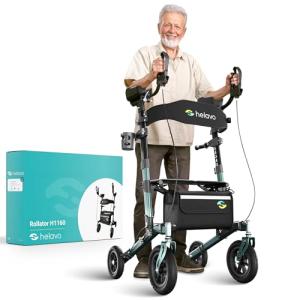The Essential Guide to Handicapped Walkers: Enhancing Mobility for Individuals with Disabilities
Walking aids play a critical function in enhancing the quality of life for people with handicaps. Among Walking Frame , handicapped walkers, likewise called walkers or rollators, are indispensable tools that assist users in keeping mobility, self-reliance, and security. This blog post aims to supply an in-depth introduction of handicapped walkers, discussing their types, advantages, and essential factors to consider for users when picking a walker that best fits their needs.
Table of Contents
- What Is a Handicapped Walker?
- Kinds Of Handicapped Walkers
- Standard Walkers
- Two-Wheeled Walkers
- Four-Wheeled Walkers
- Features to Consider When Selecting a Walker
- Advantages of Using Handicapped Walkers
- FAQs
- Conclusion
What Is a Handicapped Walker?
A handicapped walker is a mobility aid created to assist individuals who have difficulty walking or keeping balance due to impairments, injuries, or aging. It provides support, stability, and safety, helping users browse their environment with greater self-confidence and independence. Handicapped walkers come in different styles to fit various mobility challenges, making them flexible tools for lots of people.
Kinds Of Handicapped Walkers
Understanding the different kinds of walkers is important for selecting the right one. Below is a summary of the primary types of handicapped walkers:
| Type | Description | Perfect For |
|---|---|---|
| Standard Walkers | Basic frame without any wheels, requiring the user to lift it to move. | People with stable balance. |
| Two-Wheeled Walkers | A lightweight walker geared up with 2 front wheels for simpler movement. | Users needing more mobility support. |
| Four-Wheeled Walkers | An advanced design with four wheels, handlebars, and frequently a seat. | Those requiring optimum support and rest options. |
1. Requirement Walkers
Standard walkers, one of the most fundamental version, are constructed as a strong frame. Users raise the walker and place it forward, permitting stable movement. This kind of walker is perfect for individuals with minimal mobility however who retain great balance.
2. Two-Wheeled Walkers
These walkers integrate two front wheels, considerably improving maneuverability compared to basic walkers. Users can push the walker instead of raising it, making it simpler to browse.
3. Four-Wheeled Walkers
Likewise understood as rollators, four-wheeled walkers come with wheels on all four legs, making them easy to press. Many models also feature a comfortable seat and backrest, making it possible for users to take breaks throughout longer walks or trips.
Features to Consider When Selecting a Walker
Before purchasing a handicapped walker, it's important to evaluate certain features that might boost the user experience and security. Here are some essential factors to consider:
| Feature | Description |
|---|---|
| Weight Capacity | Make sure the walker supports the user's weight. |
| Height Adjustability | Search for adjustable handlebars for a proper fit. |
| Wheels Quality | Examine if the wheels are robust for numerous surfaces. |
| Brake System | Recognize if it has a reliable braking system for safety. |
| Storage Options | Think about if it has a basket or bag for personal items. |
Advantages of Using Handicapped Walkers
The advantages of utilizing handicapped walkers extend beyond mobility, providing emotional and physical benefits:
- Increased Independence: Walkers enable users to walk around without relying exceedingly on caretakers or relative.
- Improved Safety: With enhanced stability, walkers substantially decrease the risk of falls, adding to a more secure living environment.
- Improved Confidence: Users often report feeling more secure and positive when utilizing a walker, motivating them to engage more in social activities.
- Health Benefits: Regular use of a walker can promote exercise, resulting in much better cardiovascular health, enhanced muscle tone, and total wellness.
Frequently asked questions
1. How do I know which type of walker is best for me?
Choosing the best walker depends on your physical capabilities and mobility requirements. Consulting with a healthcare expert or physical therapist can offer customized recommendations based upon your particular health scenario.
2. How should I preserve my walker?
Frequently check your walker for wear and tear, mostly focusing on the wheels and brakes. Clean down surface areas with a wet cloth to keep it clean and shop it in a dry place when not in usage.
3. Can I utilize a walker on uneven surfaces?
While some walkers are better matched for uneven surface areas than others, caution is advised. It may be useful to pick a walker with larger wheels for better stability on such terrains.
4. Exist walkers developed particularly for outdoor usage?
Yes, many four-wheeled walkers are specifically developed for outdoor usage, including larger wheels and more robust construction to handle different terrains.
5. Do walkers been available in various colors or designs?
Yes, different designs, colors, and designs are available to deal with personal preferences while still meeting practical requirements.
Handicapped walkers are transformative help that can substantially improve the lifestyle for people dealing with mobility obstacles. By comprehending the kinds of walkers, their features, and the benefits they offer, users can make informed options that line up with their individual mobility requirements. As technology and design develop, the future of handicapped walkers assures even greater assistance and comfort, motivating self-reliance and an active way of life for all.

